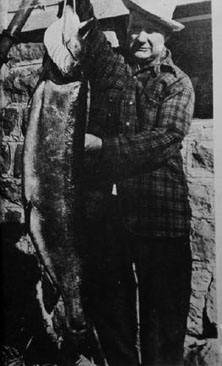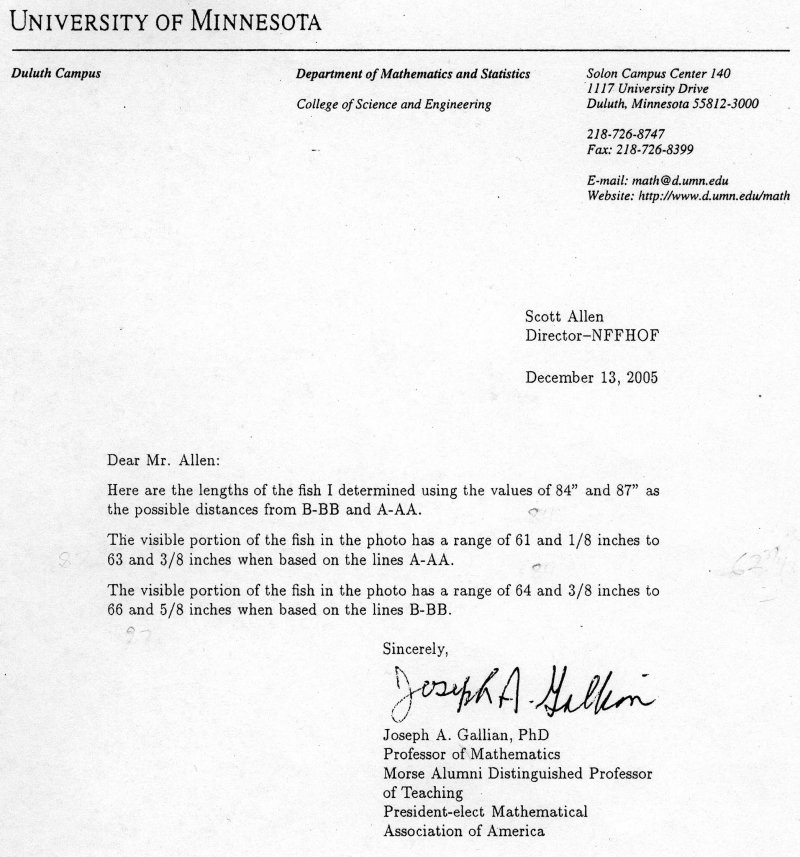Muskie alliance stands by challenge to record
Mike Norris Outdoors - January 17, 2006
The National Freshwater Fishing Hall of Fame has decided a report challenging Louie Spray's 1949 world record musky lacks sufficient merit to overturn the mark.
The Woodstock-based World Record Muskie Alliance (WRMA) delivered the report to the Hall on Oct. 20, the 46th anniversary of Spray's catch. In the report, photogrammetric analysis of a photo of the Spray musky, conducted by Toronto-based DCM Technical Services, stands as the primary basis for WRMA's theory that the Spray musky was approximately 53½ inches long, rather than the 63½ inches reported by Spray.

At 10 inches shorter, the WRMA concluded, Spray's musky could hot have weighed 69 pounds, 11 ounces. The original mount of Spray's record musky was destroyed in a fire.
But according to Emmett Brown Jr., executive director of the Hall, the WRMA report failed to follow one of the most basic principles of scientific methodology, that of conducting a control experiment to test the various assumptions.
Speaking on behalf of the Hall, Brown said in a press conference earlier this week that the primary steps that make up the scientific method are asking a question, formulating a hypothesis, designing an experiment to test the hypothesis, doing a controlled experiment to test the reliability of the results and coming to a conclusion.
The Hall contends no controlled experiment was ever done to test the approach DCM used in the report, and too many assumptions had to be made. As a result, Brown and seven other Hall of Fame board members believed there was too much reasonable doubt as to the accuracy of DCM's results.
To further support the their decision, the Hall's review said photos of the Spray musky clearly support its reported size of 63½ inches when a same-plane, direct-scaling method is applied to the photos.
The Hall said that because the size of the fish is being checked against an accepted measurement that is in the same plane as the fish, the potential variable of perspective distortion from the calculation is eliminated.
Working with two college professors who hold doctorates in mathematics, the Hall tested their theory and found the length of Spray's record musky to be in the range of 62.75 to 63.62 inches.

Rumors have abounded as to how Spray caught his record musky since the day he landed the fish back in 1949, but only in the last 10 years have rumors spread as to the validity of the size and weight of the Spray musky. The WRMA report claiming Spray falsified the length and weight of the fish, and the Hall's decision to uphold the Spray record, will certainly fuel the debate further.
"While the WRMA applauds the Hall for making their rebuttal available to the general public via its Web site, we stand firmly behind both the information contained in the original Spray Summary Report, and the scientific methodologies employed by our expert researchers," said WRMA president Richard Delaney.
"In fact, we feel strongly that the Hall's rebuttal only serves to broaden the controversy regarding the legitimacy of the current record muskellunge, and we will again turn the matter over to qualified, independent experts, and report our findings to the media and general public as soon as they become available."
Before drawing their own conclusions, Brown responds by imploring everyone thoroughly read the Hall's entire review as to why they upheld the Spray record. The review can be found on the Hall's Web site at www.freshwater-fishing.org/spray
A full copy of the WRMA's 93-page report is available for viewing at http://www.worldrecordmuskiealliance.com
Outdoors with Mike Norris is heard every Thursday from 3-4 p.m. on WBIG (AM-1280). For more information on his fish guiding service, Mike Norris can be reached at wallimike@aol.com
|